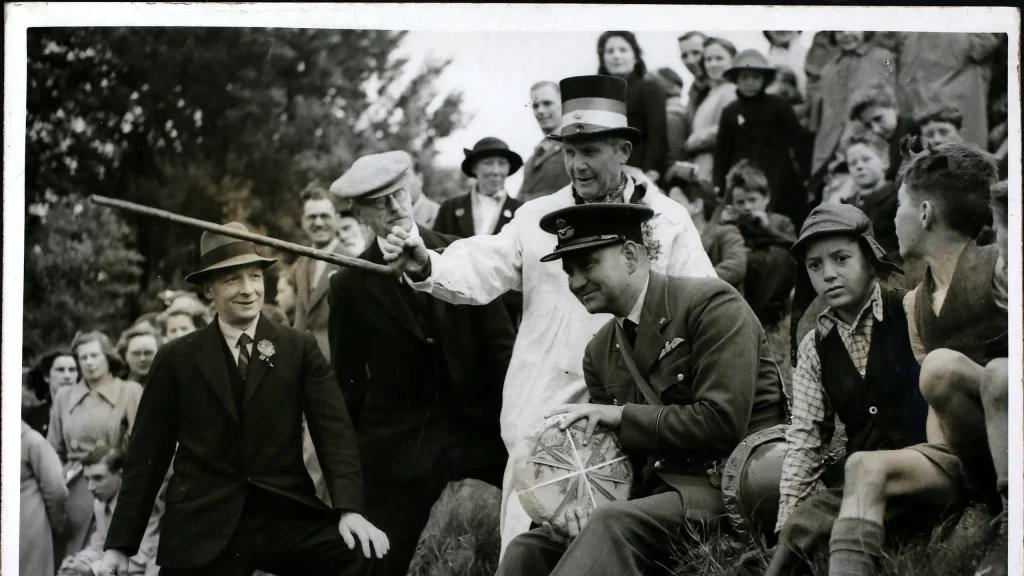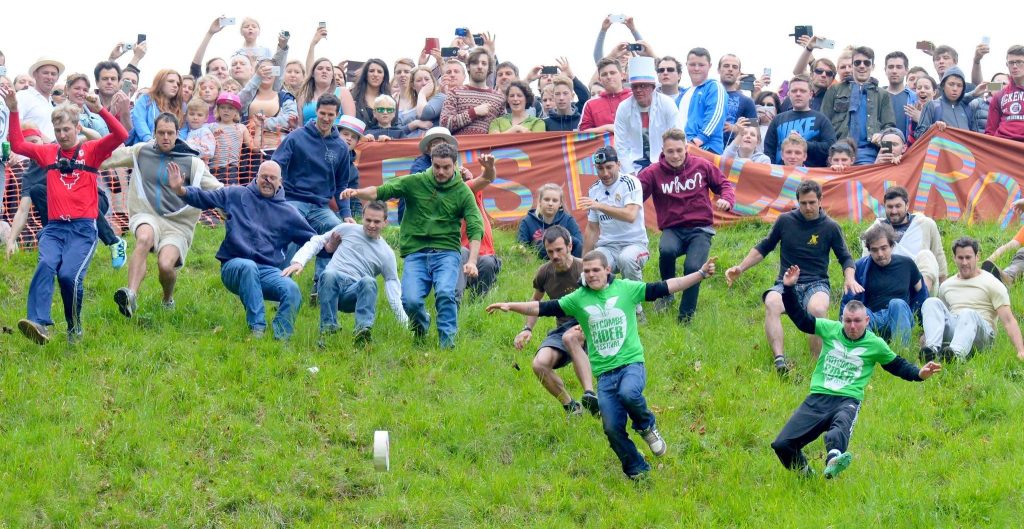The Complete Guide to Becoming a Competitive Cheese Rolling Master
Introduction:
Competitive cheese rolling is a bit more than just another weird sport—it’s a challenge of velocity, agility, and braveness. From its humble beginnings in the small town of Gloucestershire in England, it has now become a global event that takes in adrenaline junkies and cheese-crazed fans alike. So whether you are a seasoned roller or a first-timer with just plain curiosity, competitive cheese rolling requires skill, strategy, and of course, some luck. This guide will walk you through everything you must know to win the hill and claim your cheese.

Understanding the History of Cheese Rolling:
Cheese rolling dates back several hundred years, with the first reported event taking place in the early 1800s. It started as a local festival whereby an individual would chase a wheel of cheese down a steep hill in the village of Brockworth. This country sport has, over the years, evolved into an international one where participants from different corners of the world come to take part in this sporting event. In keeping with tradition, the history of cheese rolling can help you appreciate the sport more.
How the Game Works?
Get to understand the rules of competitive cheese rolling before you hit that hill. The objective of the race is simple: to chase the wheel of cheese down a hill and get to the bottom first. The difficulty lies in actually achieving it, which is by no means easy. In most instances, the hill is steep and therefore impossible to maintain balance. Individuals may fall, roll, or even run after the cheese, but pushing or shoving is strictly prohibited. While some may think that it is about getting to the cheese first, technically, whoever crosses that finish line first wins. Read more.
Training for Cheese Rolling:
No matter the competitive cheese-rolling running style, one needs speed, strength, and endurance; thus, one has to prepare for this competition by working on lower body strength, balance, and cardiovascular fitness. Squats, lunges, and hill sprints are excellent exercises for actually bulking up both your muscles and stamina to fight your way up the hill. Likewise, exercises that increase your balance, like yoga or stability ball exercises, can help you stay upright as you chase cheese up the side of a hill.
Mastering the Descent The most tricky thing about cheeserolling has to do with the way one descends. The trick of this sport lies in maintaining control to the best possible extent while it is really high speed. Take a slight forward lean to keep the momentum moving without falling too much, as you could lose your balance. Keep your knees slightly bent so the bumps on that uneven ground don’t shock you, and just use your arms to balance. Keep in mind that it is not just about speed, this will lead to tumbles and falls— controle is paramount.
Strategy and Tactics:
For one to successfully compete in cheese rolling, more is involved than mere physical strength; there needs to be a personal strategy. Position oneself at the start wisely. Those starting in the middle of the pack will often do very well since they can follow along the path set by the leader but do not have much of the congestion those up front do. Keep an eye on the cheese; its waywardness can be quite unpredictable, and the trick lies in keeping very close to it without knocking into it. Remember you can use the natural slope of the hill to help you along, letting gravity do some of the hard work.
The Right Gear:
The right gear definitely makes a huge difference. The best kind of apparel would be lightweight, breathable, and fast-drying, with high ease of movement. You will also require strong shoes so you have good grip, as the ground will be quite slippery and uneven. Some contestants wear protective gear, such as knee and elbow pads, to help avoid injuries, but padding yourself too much will inhibit your mobility.
Dealing with Injuries:
Given the roughness of the ground and the high speeds reached by the cheese, it is common for injuries to be incurred in this competitive sport. Treating them is crucial if they do occur. Minor scrapes and bruises can be treated, but more serious injuries—for instance, sprains or even fractures—may require hospital treatment. Always warm up before the event; this will help decrease your chance of injury. If you don’t feel right about something, it’s best to stop and seek help.
The Mental Game in Cheese Rolling:
As with any other sport, mental preparation is as vital in cheese rolling as physical preparation is. The relatively steep decline and the possibility of hurting yourself can be very intimidating. However, it is essential to keep the head cool and have belief. You could enhance the level of belief through visualization techniques. For example, by going through the decline in your mind, skimming through where you perceive that you descend successfully. Another thing that should help maintain you composed and structured during the competition is breathing exercises and mindfulness.
Learning from Pro’s:
The best way to develop your cheese-rolling skills is by watching seasoned competitors. Many old masters have given their advice, ranging from how best to maintain balance to the best starting position. You probably could derive from studying past race videos just things that work and those that do not. Ask older rollers for advice; they often can give you valuable tips for the competitive edge.
The social factor relative to cheese rolling:
Despite being a skill and bravery testing event, competitive cheese rolling is also a social event. The most bubbly factor that drives the participants into this sport is the friendliness that thrives among the participants. Many of the participants have gone on to make friendships which have a long line of period and at the end of every race, there is a sharing of stories as the participants laugh at the day’s tumbles and enjoy the community spirit that in sum sums up exactly what cheese rolling is about.
Participation in International Events:
It no longer confines itself to the boundaries of Gloucestershire; in fact, many countries around the world now observe it. Competing in international competitions thus provides new competitions, with different terrains as new challenges to put your skills to test on these diverse courses. Every event will be held on a different kind of landscape, from the tremendously steep hills in England to new terrain in very far-off places. Additionally, traveling to compete affords visibility and learning from other cheese-rolling enthusiasts.
The Future of Competitive Cheese Rolling:
As the popularity of the event goes out of proportion, competitive cheese rolling is taking new phases. There are new emerging techniques and strategies that are literally there in the competition, changing more than ever. In fact, the sporting future of cheese rolling is very probable in nature, with more organized events available across the globe and increased numbers of participants emerging. As there will be even more innovation and excitement, the trend could probably prolong even in the upcoming years.

Conclusion:
It’s no easy feat to become a champion competitive cheese roller, but with the proper preparation, strategy, and mindset, you’ll be hurtling down the hill with confidence. Get after that first wheel of cheese or look to victory in international events—just do it with lots of fun and adrenaline. The one thing to remember: This is cheese-rolling land. The glory comes in the adventure and camaraderie of one of the planet’s weirdest sports.
FAQs
1. What is competitive cheese rolling?
Competitive cheese rolling is a sports discipline in which its participants chase down a steep hill after a device equipped with some cheese. The first one to cross the finish line is declared the winner of this sport.
2. How do I train for competitive cheese rolling?
Training should incorporate a lot of lower body strength, balance, and cardiovascular exercise. Hill sprints, squats, and yoga exercises among others will ensure one achieves an adequate physical self for the event.
3. What should I wear to roll cheese?
Wear lightweight, breathable clothing that allows for full movement, and sturdy shoes with good grip. Some participants also wear protective gear like knee and elbow pads.
4. Is cheese rolling dangerous?
Yes in the sense physically dangerous due to the steep terrain and high speeds the activity endures. It’s a common event where one does hurt themselves, so being mentally and physically prepared and knowing how to handle minor injuries is vital.
5. Where can I get my cheese rolling done competitively?
Although the most well-known event is in Gloucestershire, England, cheese rolling competitions now take place in many different countries across the globe. Look and check for local listings or an online community for events close to you.
